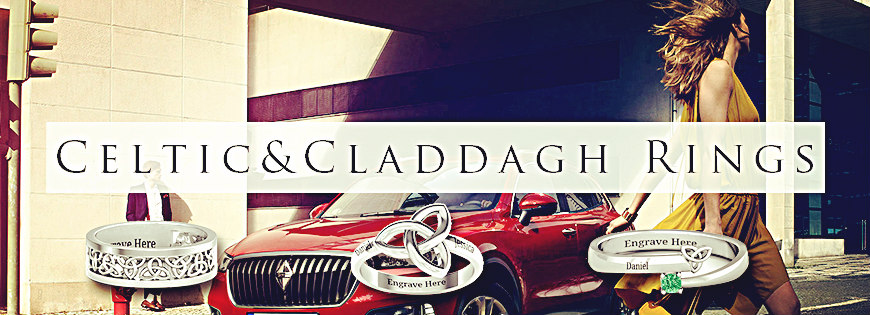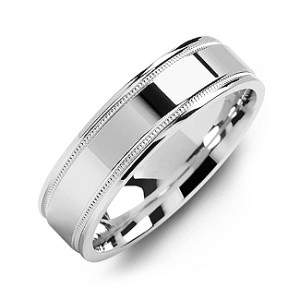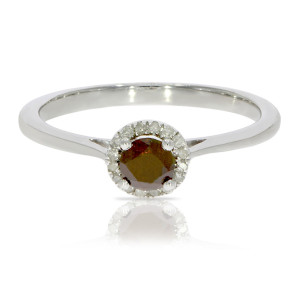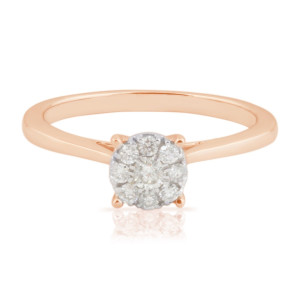Although cavemen may have given their shiniest rock to the cavelady they'd just bashed over the head and dragged home to claim as their own, the first record of the giving of a physical symbol of betrothal is in Ancient Egypt, around 2000BC. Circles were used in the time of Tut to symbolise the eternal cycle of life, while the space inside it represented gateways. (And quite possibly ladies' front-bottoms too.)
This idea spread across the Mediterranean, with rings also given in Ancient Greece and Rome, where the tradition of placing the token on the fourth finger of the left hand began. Ancient Greeks believed that finger contained a vein that led straight to the heart. Roman brides were usually given two rings, a gold one which she wore in public, and one made of iron which she could wear at home while making Roman sandwiches and doing a bit of
Roman dusting.
After all of these empires crumbled like Steve Guttenberg's post-Police Academy career, the idea of giving a physical symbol of betrothal disappears from the historical record, until around the 14th century when gold 'posie rings' were swapped by lovers.
But the person to blame for the rise of the diamond engagement ring is Archduke Maximilian of Austri, who gave the first well-documented diamond engagement ring to Mary of Burgundy in 1477. This is a trend among those who could afford it, although until diamonds wes discovered in South Africa in 1870, they continued to be a rare commodity and only available to the very wealthiest.
As production and supply increased, prices decreased, but it was only as recentdy as the 1930s that diamond rings became the default choice for most engagements, as a result of some clever marketing.
A diamond is forever
De Beers is an international mining company that once controlled 90% of the world's diamond trade, although this stranglehold has loosened in the last 20 years. In the 1930s, De Beers realised that diamonds were becoming increasingly common as mines opened up and that, as the stones became commoditised, their lack of intrinsic value would result in a reduction in prices. To counter this, De Beers needed to increase the perceived value of diamonds, and they did this by directly linking the size and quality of a diamond to a person's love for another.
In 1938, De Beers first ran what is often cited as the most successful ad campaign in history. Yes, even more effective than the Budweiser 'wassup' ads that embarrassing dads still quote to this day.
The brief for the advertising agency was "to create a situation where almost every person pledging marriage feels compelled to acquire a diamond engagement ring".
The first campaign used the tagline, "A diamond is forever"- cleverly tying the tough physical properties of a shiny bit of rock with the idea of a permanent commitment. Obviously the tagline was successful - it has entered everyday language. The ad agency also started lending diamonds to Hollywood stars to wear on-screen and at the Oscars, spreading the propaganda through the distribution of those films.
Variations on this ad campaign have been running ever since and its success and the demand it generated, combined with De Beers regulating the supply of diamonds and keeping it artificially low, has ensured that prices have stayed high ever since.
After establishing diamonds as the one true symbol of lasting commitment, De Beers needed to convince men that they should spend a good whack of their hard-earned moola on one. In a campaign in the 1980s they came up with another line that still helps dictate the amount that men expect to spend on a ring: "Isn't two months' salary a small price to pay for something that lasts forever?"
The idea that diamonds are the one true symbol of love, commitment and betrothal has well and truly taken hold. Some men put off proposing until they have enough money for a diamond that they feel reflects the intensity of their love - all because of a 70-year-old ad campaign.
De Beers isn't the only devilishly clever company out there who has managed to change behaviour through marketing though. There are many other examples, like Coca-Cola popularising the idea that Santa Claus wears red by giving him their brand colours in a 1931 ad campaign or Nike inventing the concept of jogging as a leisure activity.
The point of all this is to explain that, although the practice of giving a ring as a symbol of betrothal is an ancient one, the idea that it needs to be a diamond is not. Diamonds aren't rare or even particularly special - they're only expensive because De Beers has had such a firm grip on both supply and demand. If you would like to buck the norm and choose a different stone, you can and should do so. However, before you make any big in decisions, i?s a good idea to have a good think about what you can stretch to and what your ladyfriend is going to be expecting.









































-Stone-1-300x300.jpg)






